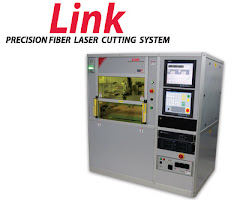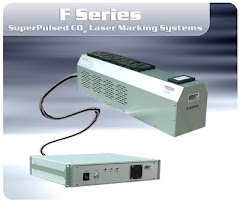
In today’s economic market manufacturers are focusing on ways to get Lean in order to not only be competitive, but to survive the downturn of the economy. The term Lean Manufacturing was coined in the 1980’s and its essence is to help companies identify and examine the specific tools needed to improve a plant's total productivity, profitability, safety and environmental performance.
For many, Lean represents a set of "tools" that assist in the identification and steady elimination of waste. As waste is eliminated quality improves while production time and cost are reduced. The core of Lean Manufacturing is to focus on eliminating any expense for any goal other than the creation of value for the end customer.
Top companies are utilizing these lean tools to improve the reliability and performance of their mechanical assets and overall operations. Implementation of just one idea could save a plant thousands, or even millions of dollars. However, seeing the big picture and being able to lead change and bring the plants entire team into the improvement process is key.
How Do You Get Lean?
When looking for effective Lean Manufacturing strategies for achieving measurable financial and productivity returns, one of the first places to examine is the manufacturing floor itself. Production managers need to identify equipment issues – determining if the machines are helping or hindering in production efforts. Maintenance costs and downtimes need to be examined and an effort to effectively utilize production floor space is needed as well. Additionally, the number of man hours needed to complete a job should be examined, and anomalies should be questioned. Each department in the company should be examined in a similar fashion. Simply focusing department by department on cost reducing and production increasing activities in order to improve overall customer value, is the core of lean manufacturing. However, it’s important to note that these efforts cannot be considered a one-time activity, but incorporated into the day-to-day workings of the company. Lean Manufacturing is an ongoing process and the bottom line to increasing your bottom line – continually question everything.
Lean Manufacturing in Action
Lean Manufacturing has long been the focus at Laser Photonics, the industry leader in developing fiber and CO2 laser systems. Their latest development in Lean Manufacturing technology is the Laser Photonics Excalibur Flexible Manufacturing Cell, specifically designed for any manufacturer or production facility that performs applications which entail laser cutting, welding or remote welding and sheet cutting or marking. Offering a complete turnkey solution for manufacturers and production facilities, this new concept introduces the idea of using one Fiber Laser Module to control the tasks of up to four different machines with the use of one optical switch.
Fiber is Lean
For manufacturers utilizing CO2 laser systems, simply replacing their CO2 laser with a fiber laser system alone will make huge advances towards lean manufacturing. When compared to CO2, Fiber lasers consume less power, have a longer diode life, require less maintenance, are more compact, they reduce production downtime due to quick installation and start up, feature increased production speed and output, are easily integrated into any production process and require no consumable gases. Fiber lasers are also easily upgradable unlike CO2 laser systems. As need for more power develops, new modules can be added to a fiber laser thereby increasing the power without replacing the entire system. Bottom line – Fiber lasers are Leaner than CO2.
Lean Machine - The ExcaliburWith an eye towards significantly reducing the initial capital expenditure, decreasing the footprint, lowering operating costs, and decreasing maintenance costs, The Excalibur is nothing but lean. Additionally, this Flexible Manufacturing Cell increases throughput, and is leading the way in helping manufacturers increase their production speed in situations where system programming and training times are slowing down production and costing valuable time and money. While the laser is processing materials on one system, programming and training can take place on another system. Once the first job is finished, the laser can be switched via the optical switch to the next machine without any downtime.
Not only is The Excalibur lean, the machines it controls are lean as well. Though this flexible manufacturing cell can be custom built with different machines – most requests include a
Titan Series™, a multipurpose fiber laser cutting machine and a
Cobra FL welding robot. The Titan is equipped with a high-powered, energy efficient fiber laser and an advanced direct drive motion control platform. It also has a lighter weight design and the fastest cutting speed on the market for comparable systems. This system offers ultra low power consumption allowing for the lowest operating costs among all laser types. The Titan requires no optical system alignment, laser service or laser replacement parts making this system virtually maintenance free.
The Cobra FLS robot is ideally suited to integration and automation for welding applications. These custom-built systems offer increased flexibility, reliability, and quality. Optimum return on investment is guaranteed with these fully programmable machines.
For more information about Lean Manufacturing and The Excalibur Flexible Manufacturing Cell, The Titan Series™ fiber laser cutting machine and the Cobra FL welding robot, contact Laser Photonics at 407-829-2613 or visit their website at
http://www.laserphotonics.com/www.laserphotonics.com.



 “The quality of our systems speaks for themselves. We have systems that have been running non-stop for years in the field which have not required any maintenance,” said Ryan Semmer, Industrial Product Marketing Manager for Laser Photonics.
“The quality of our systems speaks for themselves. We have systems that have been running non-stop for years in the field which have not required any maintenance,” said Ryan Semmer, Industrial Product Marketing Manager for Laser Photonics.





.jpg)




.jpg)
.jpg)









.jpg)





.jpg)
Clr09_400px.jpg)




